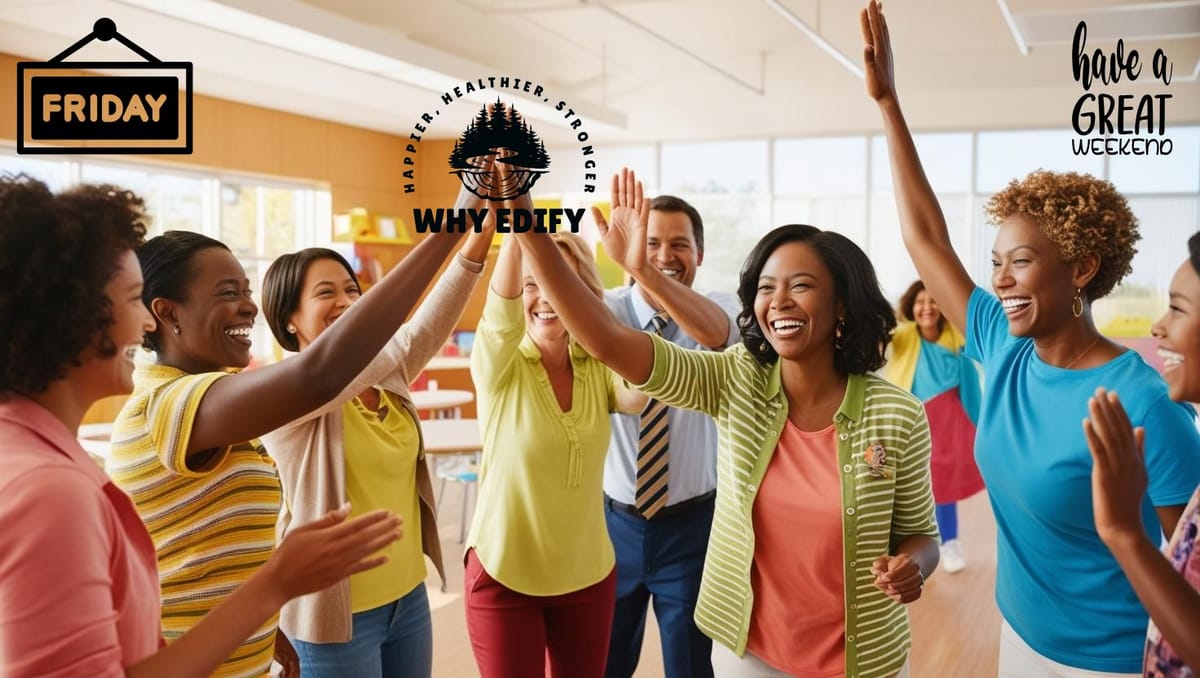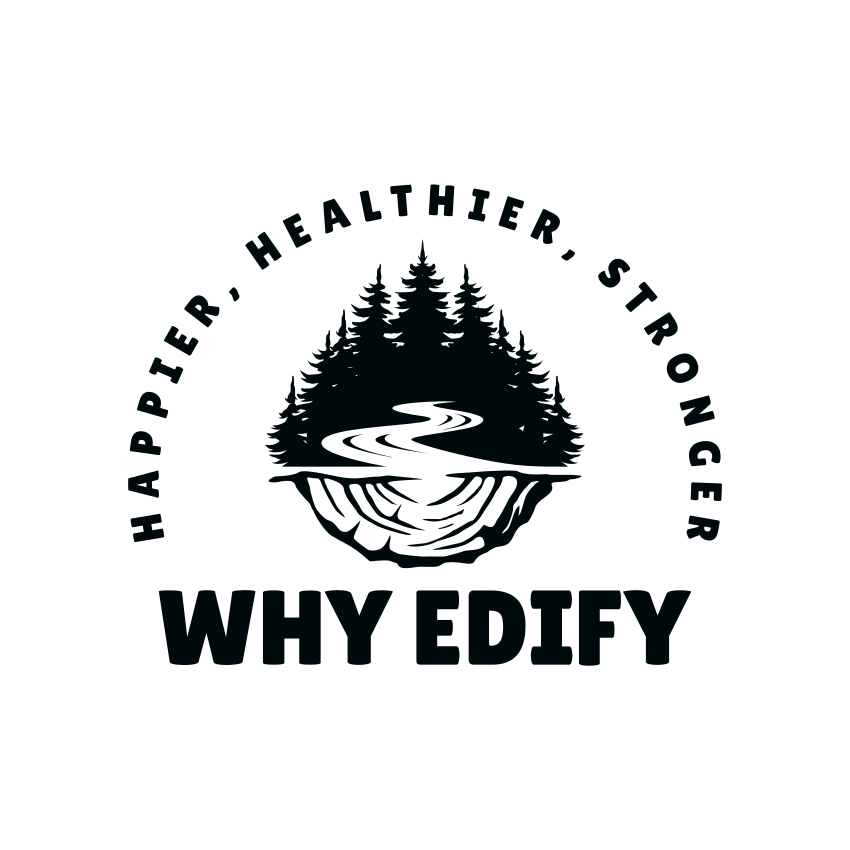Do Your Thing
Discover practical strategies for ending the school year positively, implementing AI in education effectively, and building authentic confidence.


The Friday Five
Become a SupporterIt's 8:49 pm on Thursday night as I type this. I am caught in a hefty state of "teacher tired." Only educators know this level on the tiredness scale.
I am thankful for all of you and your dedication to your craft and your students. Let's rest up, lean on our teacher friends, and finish the year strong. Have a great weekend!
Jeremy
Reflection Questions:
- How can you incorporate one element of authentic confidence-building into your daily routine as both an educator and an individual? Which of the three exercises resonates most with your current growth goals?
- What specific AI prompt from the newsletter could most benefit your current teaching needs, and how would you modify it to address a specific challenge in your classroom?
- As the school year approaches its end, which strategy for supporting students' transitions particularly stands out, and how might you implement it in a way that aligns with your teaching style and classroom culture?
The Friday Five
1 - Help Students End The School Positively
Parents can effectively support their children during the transition at the end of the school year by maintaining consistent routines, showing emotional support, and celebrating achievements. Key strategies include keeping regular sleep schedules, being present for their children through dedicated quality time, and acknowledging their feelings about upcoming changes.
They should recognize that each child may handle this period differently and tailor their support accordingly, while also taking time to commemorate this important milestone in their child's academic journey. Consider sharing this article with parents and trying to incorporate one of the ideas below.
- Recognize Your Impact: Create a "Year in Review" memory book where students write their favorite moments, lessons learned, and personal growth. This reinforces your impact while giving students a chance to reflect on their journey.
- Support End-of-Year Transitions: Design a "Looking Forward, Looking Back" bulletin board where students can share their favorite memories from the current year and their hopes for the next grade. This helps acknowledge their feelings about the transition while celebrating achievements.
- Collaborate with Parents: Create personalized summer learning passports for each student, incorporating specific growth areas and fun activities that parents can do with their children. Include spaces for both academic achievements and social-emotional milestones.
2 - Lost in the AI World?
AI tools offer powerful ways to enhance their teaching practice through thoughtful implementation of prompts and strategies. From creating engaging lesson plans to developing differentiated assessments, these technological resources help teachers streamline their workflow while maintaining high-quality instruction.
By incorporating AI assistance into daily teaching tasks, educators can focus more time on student interaction and personalized learning experiences, ultimately preparing students for success in an increasingly digital world.
There are many entry points for using AI in the classroom and it can be tough to know where to start. Here’s what has been working for me. Also, you can test out the prompts below.
Here are three key prompts from the article that you can try today:
"Create a detailed lesson plan for [topic] that incorporates active learning strategies and real-world applications."
"How can I modify this lesson to accommodate visual, auditory, and kinesthetic learners?"
"Suggest creative project ideas that will help students demonstrate understanding of [concept] while building 21st-century skills."
3 - Build Confidence
True confidence is built on three fundamental principles: being genuine rather than pretending, developing your own authentic style rather than copying others, and recognizing that confidence comes in many forms.
Self-awareness and self-acceptance form the foundation of lasting confidence, while understanding that both quiet conviction and outspoken assertion are equally valid expressions of self-assurance.
The key to developing genuine confidence lies in maintaining self-compassion, particularly during setbacks, and focusing on personal growth rather than meeting external expectations. This approach creates a more sustainable and authentic form of confidence that remains steady through both challenges and successes.
Practical Actions to Build Authentic Confidence
Here are three concrete exercises you can try today:
- Daily Self-Reflection Journal: Spend 5 minutes each evening writing down one situation where you felt uncertain, how you handled it, and what you learned about yourself. This builds self-awareness and helps identify patterns in your confidence journey.
- The "Three Strengths" Exercise: Each morning, list three unique qualities you possess (they don't have to be extraordinary). For example: "I'm a good listener," "I follow through on commitments," or "I'm thoughtful in my responses." This reinforces your authentic traits rather than mimicking others.
- Comfort Zone Challenge: Choose one small action each week that stretches you slightly but doesn't overwhelm you. For introverts, this might be speaking up once during a meeting; for extroverts, it might be practicing active listening without interrupting. Track how you feel before and after, focusing on personal growth rather than performance. I recently tried this with a thirty-day livestream challenge - here’s the good, the bad, and the ugly.
4 - Do Your Thing
“Don't waste your energy trying to change opinions ... Do your thing, and don't care if they like it.”―Tina Fey
5 - Teacher Commuter Playlist - Missed the Boat by Modest Mouse
Choose Your Own Adventure
- Studysnap is an AI-powered mobile app that enhances student learning with features like a built-in chatbot, math solver, quiz and flashcard tools, and collaborative sharing, tailored to individual academic levels and interests for improved productivity.
- Book Bentos are creative assignments combining visual elements with literary analysis, allowing students to express their understanding of texts through photography and personal items, while also being less time-consuming to grade than traditional essays
Why Edify Recommendations
- Thirty Day Challenges for the Mind, Body, Spirit and School (subscriber discount.) Here's my most recent challenge. It doesn't have to be pretty in order to be effective.
❤ Enjoy this Article?
🍵 Show Your Support and 🤗 Share It



